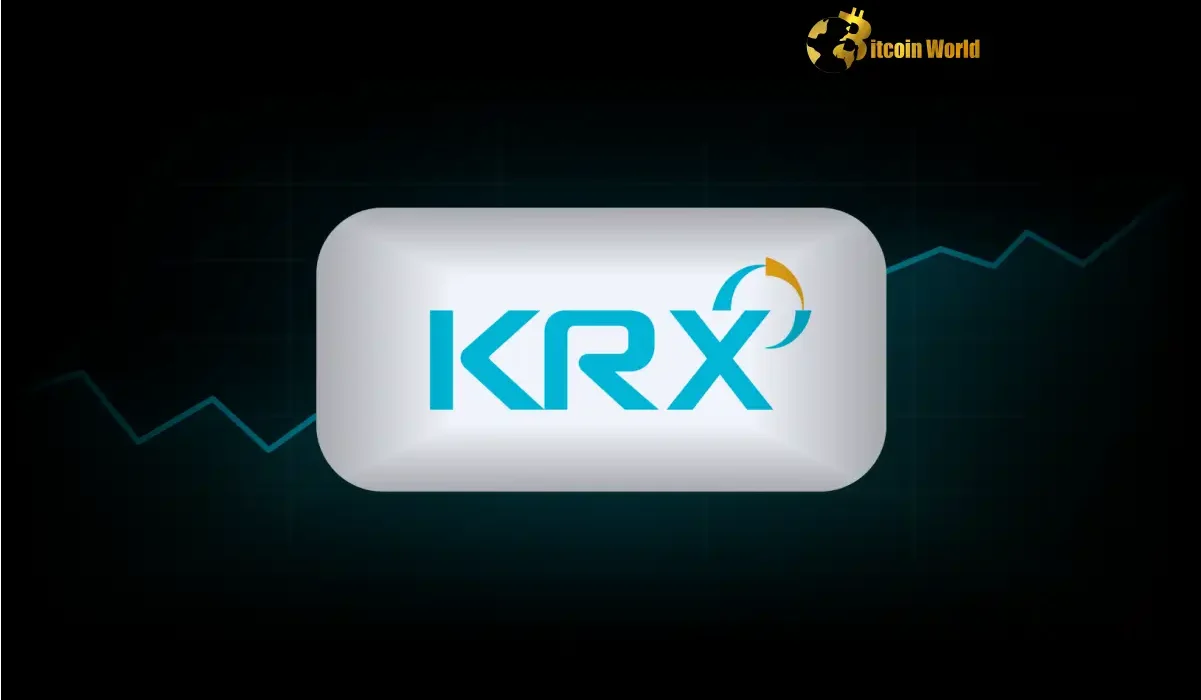Ever felt the gut-wrenching swings of the crypto market? Imagine that level of volatility hitting a major national stock exchange. That’s precisely what happened in South Korea. The Korea Exchange (KRX) just activated a ‘sidecar’ – a temporary trading halt – on the KOSPI, their flagship stock index. This dramatic measure, designed to curb wild price swings, marks the first such intervention in eight long months. For crypto enthusiasts accustomed to rollercoaster rides, this event in the traditional finance world serves as a stark reminder: market volatility is a universal force, impacting all asset classes.
Decoding the Korea Exchange Trading Halt: What Happened?
News broke via News1 that the Korea Exchange initiated a sidecar on the KOSPI. But what exactly does this mean? Think of a sidecar as an emergency brake for the stock market. It’s triggered when prices fluctuate too rapidly, acting as a circuit breaker to prevent panic selling or irrational exuberance from spiraling out of control. Here’s a breakdown:
- Sudden Price Fluctuations: The KOSPI experienced a rapid and significant price swing, prompting the KRX to act.
- Sidecar Activation: This mechanism temporarily halts trading, giving the market a moment to breathe and investors time to reassess.
- Preventing Panic: The primary goal is to prevent disorderly markets and protect investors from extreme volatility.
- Rare Occurrence: The fact that this is the first time in eight months highlights the unusual nature of the market conditions that triggered it.
While details surrounding the exact trigger for this specific trading halt are still emerging, it underscores the ever-present reality of market instability, a concept very familiar to anyone navigating the crypto sphere. In the volatile world of cryptocurrencies, temporary halts, while not always formally implemented by exchanges in the same way as traditional markets, are mirrored by periods of network congestion, exchange outages, or extreme price corrections that effectively pause trading activity.
Why Should Crypto Investors Care About the Korea Stock Market’s Volatility?
You might be thinking, “KOSPI? That’s stocks, not crypto!” However, understanding events in traditional financial markets like the Korea Stock Exchange offers valuable insights for crypto investors. Here’s why this event is relevant:
- Global Market Interconnectedness: Financial markets are increasingly intertwined. What happens in one market can ripple across the globe, affecting investor sentiment and capital flows in others, including crypto.
- Volatility is a Universal Language: Whether it’s stocks, bonds, or Bitcoin, volatility is a core characteristic of financial markets. Learning how traditional markets manage volatility can inform strategies in the crypto space.
- Early Warning Signals: Turbulence in established markets might foreshadow potential shifts or increased volatility in the crypto market. Paying attention to these signals can be advantageous.
- Investor Psychology: Human emotions drive market movements in both traditional finance and crypto. Understanding how fear and greed play out in the stock market provides a framework for analyzing crypto market psychology.
Risk Management Lessons from the KOSPI Trading Halt
The Korea Exchange’s proactive measure highlights the importance of risk management in any investment portfolio, including crypto. While the crypto market operates 24/7 and often lacks formal circuit breakers, the principles of risk mitigation remain crucial. What can crypto investors learn?
| Lesson | Application in Crypto |
|---|---|
| Circuit Breakers Exist for a Reason: Trading halts are designed to prevent catastrophic market crashes by allowing for a cooling-off period. | While formal halts are rare in crypto exchanges, be prepared for periods of network congestion or exchange issues that can effectively pause trading. Have a plan for these situations. |
| Volatility is Inherent: Even established stock markets experience significant volatility. Crypto, being a newer and less regulated asset class, is inherently even more volatile. | Embrace volatility as part of the crypto landscape. Implement strategies like diversification, position sizing, and stop-loss orders to manage risk. |
| Institutional Measures Matter: Sidecars and other regulatory tools in traditional markets aim to protect market integrity and investor confidence. | Advocate for responsible regulation and improved infrastructure in the crypto space to enhance market stability and investor protection over the long term. |
| Stay Informed and Adaptable: The KRX reacted swiftly to market conditions. | Continuously monitor market news, on-chain data, and global events that could impact crypto prices. Be prepared to adjust your strategies as needed. |
Navigating Market Turmoil: Actionable Insights for Crypto Investors
So, how can you, as a crypto investor, apply these lessons in practical terms? Here are some actionable insights to bolster your risk management strategy in the face of inevitable market volatility:
- Diversify Your Portfolio: Don’t put all your eggs in one basket. Spread your investments across different cryptocurrencies and potentially even traditional assets to mitigate risk.
- Use Stop-Loss Orders: Implement stop-loss orders on exchanges to automatically limit potential losses during sharp downturns.
- Dollar-Cost Averaging (DCA): Instead of trying to time the market, consider DCA – investing a fixed amount at regular intervals, regardless of price fluctuations.
- Stay Updated on Market News: Keep abreast of global economic events, regulatory changes, and project-specific news that could impact crypto prices.
- Long-Term Perspective: Remember that crypto is still a relatively nascent market. Focus on the long-term potential and avoid making impulsive decisions based on short-term price swings.
- Secure Your Holdings: Use hardware wallets and strong security practices to protect your crypto assets from theft or hacks, adding another layer of financial stability to your crypto journey.
The Broader Implications for Financial Stability
The Korea Exchange’s action, while specific to the KOSPI, has broader implications for global financial stability. It serves as a reminder that even well-established markets are susceptible to sudden shocks and that mechanisms to manage volatility are essential. In the crypto world, where market swings can be even more pronounced, the pursuit of greater stability is an ongoing endeavor. This involves technological advancements, regulatory clarity, and increased institutional participation – all contributing to a more mature and resilient crypto ecosystem.
Conclusion: Riding the Waves of Volatility
The temporary halt in KOSPI trading is a shocking event that underscores the ever-present nature of market volatility, a reality crypto investors know all too well. By understanding the mechanisms used in traditional markets to manage risk, and by applying robust risk management strategies to our own crypto portfolios, we can navigate the turbulent waters of the financial markets with greater confidence and resilience. Volatility is not just a challenge; it’s an inherent characteristic of dynamic markets, presenting both risks and opportunities. Being prepared is the key to thriving in this environment.
To learn more about the latest crypto market trends, explore our article on key developments shaping Bitcoin price action.
Disclaimer: The information provided is not trading advice, Bitcoinworld.co.in holds no liability for any investments made based on the information provided on this page. We strongly recommend independent research and/or consultation with a qualified professional before making any investment decisions.


